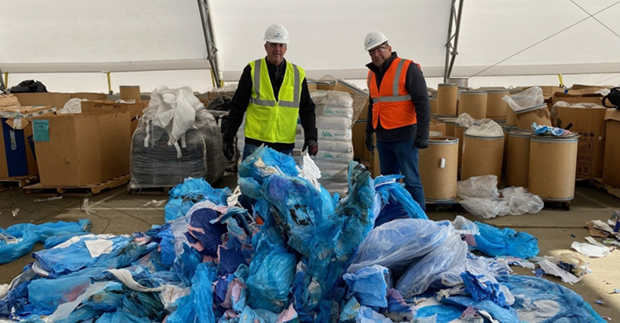The medical plastic waste recycling pilot brought together B. Braun Medical Inc. (a medical device manufacturer of smart-infusion therapy and related products), Lehigh Valley Health Network (a nationally ranked premier health system based in Allentown, Pa.) and PureCycle Technologies LLC (an advanced recycler of plastic) to evaluate and evolve the concept of health care medical plastic recycling. PureCycle Technologies focuses on the recovery and recycling of polypropylene (PP), the targeted material for this pilot. Also engaged in this pilot were Cougle’s Recycling, Inc. of Hamburg, Pa., a material recovery facility (MRF) in the Lehigh Valley region of eastern Pennsylvania, and Kurt Duska Consulting of Girard, Pa., a plastics recycling industry expert and primary author of this report.
The goal of the pilot was to identify barriers to increasing nonhazardous medical plastic recycling rates at health care providers by instituting a collection and processing program aligned with the quality requirements of an advanced plastics recycler in the region. This effort was enabled by a grant from Pennsylvania’s Department of Human Services.

